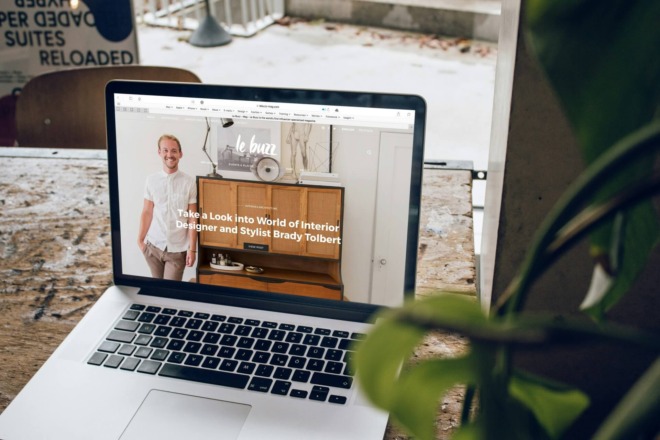One of the most difficult challenges designers face when pitching a product or idea is figuring out how to help people visualize the concept. Visualization is more effective than trying to comprehend elaborate descriptions. Rapid prototyping could reduce the struggle and provide other advantages for your business, too.
What is Rapid Prototyping?
Rapid prototyping is a method of quickly developing a scale model of a physical component or entire product. Initially, data is inputted into computers that are equipped with special design software. Then, 3-D printers are used to create the tangible pieces.
Here are 5 reasons why it could boost your business and positively impact your company’s productivity in unique ways.
1. You Can Make Changes Quickly and Receive Instant Feedback
You will most likely need to alter a concept after presenting it to a client. Rarely is anything perfect the first time around. When your only option is to stare at computer screens and try to understand what a client’s not happy about or where clarification is needed, making changes becomes a time-consuming process.
Thanks to rapid prototyping, you could have a physical model in hand, make changes right away and ask the client if their needs have been met through those alterations.
What if a client requests something that’s not practical? You can immediately use the scale model to explain why it’s not feasible. This saves time and avoids frustration for everyone involved.
2. It’s Easier to Spot Design Flaws Before Full-Scale Manufacturing Begins
You can unveil design flaws and fix them within the development stage. This helps alleviate issues commonly found in the manufacturing phase. You will compromise your company’s reputation if customers find the flaws before you do.
Product flaws are potentially harmful within any sector, but arguably more so in the medical industry, where they’re more likely to cause injuries or death, leading to lawsuits and recalls.
Put simply, it’s wise to conduct thorough design testing early on, rather than wait until it’s too late. Rapid prototyping can help you uncover problems during preliminary stages.
3. Giving Evidence of Product Success Is Easier
Clients want to feel confident about a design before financing the development of a product. A design team must offer more than confident assurances that a product is revolutionary. This is exactly what the target market wants.
Clients want solid proof they’re backing something worthwhile. Without rapid prototyping, it can be difficult or impossible to provide it.
Rapid prototyping offers progressive product models based on user feedback or client demands. If you give them to a segment of the target market, such as during a focus group, and they are favorably received, a client can easily see its value.
As more prototypes are developed and user interest grows, client confidence increases, too.
4. Your Business Could Save Money without Reducing Quality
Fender Musical Instruments is an iconic brand known for producing top-quality and beloved guitars, basses and other stringed sound makers. The brand’s ongoing success is due in large part to rapid prototyping.
In 2007, the company made a major change that allowed it to cut costs. Fender used to outsource rapid prototyping to third-party providers — the arrangement was very expensive, and the prototyping wasn’t as fast as it could have been. It regularly took a week or more to receive the results of a design concept.
Through careful calculations, a senior industrial designer at the company found that if Fender purchased its own 3-D printing equipment, a significant amount of money could be saved each year by transferring all to an in-house setup.
Fender representatives say the company today completes more rapid prototyping than ever. And the costs remain lower than before because it’s completed without outsourcing.
The Fender case study illustrates why such a possibility is worth considering. However, it’s necessary to weigh the potential profits and losses your business might experience via moving rapid prototyping in house. If you plan to increase your number of rapid prototypes and believe that trend will continue into the distant future, it might be a wise investment.
5. Rapid Prototyping Enables You to Create Custom Designs Faster Without Interrupting Your Production Process
Your clients or business partners may request special designs, leaving you wondering how to bring them to fruition without hindering your usual production process. Rapid prototyping may provide the solution you need. It allows for customized designs to be created quickly and with minimal disruption.
Toy companies are also looking at the possibility of using rapid prototyping to encourage parents to buy custom toys for their kids or to allow children to have input when creating their own toys. Rapid prototyping makes it much easier for people to enjoy customized items with great efficiency.
There are plenty of other ways that rapid prototyping can benefit your business. With so many possible advantages, it’s easy to see why so many companies have realized the value in including rapid prototyping as an integral part of their design processes.
Consider mentioning the perks of rapid prototyping next time you have a conversation with your business partners. It could add a voice of reason when discussing whether now is the right time to start using rapid prototyping on a broader scale, or introduce it to your company’s operations.
About The Author
Eleanor Hecks is the Editor-in-Chief of Designerly Magazine, an online publication dedicated to providing in-depth content from the design and marketing industries. When she's not designing or writing code, you can find her exploring the outdoors with her husband and dog in their RV, burning calories at a local Zumba class, or curled up with a good book with her cats Gem and Cali.
You can find more of Eleanor's work at www.eleanorhecks.com.


